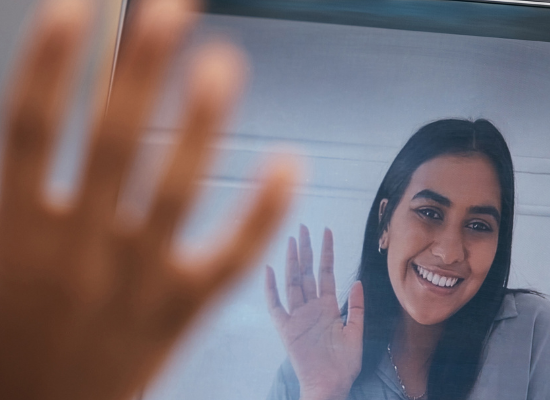
Stephanie Hepburn is a writer in New Orleans. She is the editor in chief of #CrisisTalk. You can reach her at .
There’s a fundamental truth that’s often left out of behavioral healthcare—that when a person meets with a psychiatric care provider, there are two experts in the room. One is an expert in the science and practice of clinical medicine, says Dr. Pat Deegan. The other expert is the person seeking care. “Providers can’t read our minds,” she points out. “The only way they can help is by working alongside us to determine the best course of treatment.” Shared decision-making includes talking about outcomes the person hopes to achieve with treatment and how their medication affects them. Dr. Deegan is a psychologist and recovery advocate.
There’s a long-sustained belief in society and healthcare that people with a psychiatric diagnosis are unable to make decisions for themselves and that without decision-making capacity, providers must step in and decide for them. “We’ve got plenty of data showing that this widely held assumption is frankly unfounded,” says Dr. Deegan, “and yet the practice of medicating us against our will, or medicating us without our input, is all too common.”
It’s under this false premise that many treatment relationships begin, particularly if the person has a serious mental illness and during or in the aftermath of a behavioral health crisis. “Even in periods of distress, I have wanted and unwanted effects to any given medication,” says Dr. Deegan. “I need the space to share what’s happening to me in my body.” However, intending to get the person’s life back on track, she says providers often use medication as a sledgehammer. “People get snowed with very high doses of medication, putting them in what I call, ‘chemical hibernation.’”
While a highly medicated state might make people more pliable, it also makes them more likely to stop taking medication upon discharge. “Both because of the adverse effects,” says Dr. Deegan, “and because the provider didn’t sufficiently include them in their treatment plan.” She also notes that an overmedicated state is not a good indicator of what the person can do to help themselves. Instead, from the onset, a provider’s approach to medication should be person-centered and incorporate their preferences, barriers, and optimal dosage. “Dialogue should focus on what a person can do to be well, not just what they can take.”
Dr. Deegan calls this concept “personal medicine.” That includes developing a self-care toolkit and not leaning on dependencies like smoking cigarettes. “That’s something a person takes, not what they do,” notes Dr. Deegan. For example, to be well, she plays with her puppies outdoors daily. “It puts a smile on my face, lifts my mood, and gets me out of my head,” she says. “That’s powerful medicine and part of what I do to be well and stay well in my life.”
Including what a person does and can do to take care of themselves is vital and should be a priority in crisis-based treatment. “It counters the assumption that a person experiencing an intense thing that we call a crisis isn’t broken and in need of fixing,” says Dr. Deegan, “but rather, they remain a resilient human being.” Therefore, the first question providers should ask—in addition to how they can be of help—is what the person already knows how to do that helps.
“Each and every person during a period of crisis is doing something,” says Dr. Deegan. “That may be hooting and hollering at the distressing voices to discharge the fear and tension, but that’s adaptive.” For example, when she was a teenager experiencing early psychosis, she’d tell herself that someone had put the psychedelic drug LSD in her drink and she was having a bad trip. “Telling myself that helped because it meant it would be over soon,” she says. “It was a coping mechanism.” However, providers didn’t actively engage her enough to understand why she thought that.
The underlying premise of Dr. Deegan’s approach shifts the orientation of care: a provider must first connect with the person in crisis to provide care. Compassion and empathy foster connection, so she developed simulations where a user hears distressing voices. First responders across the United States use the simulations. For 45 minutes, they hear distressing voices while going through an emergency room evaluation. During the evaluation, they’re asked to do tasks like count backward by seven and name the last four U.S. presidents. She says that by putting first responders in the shoes of someone in a psychiatric crisis, they better understand what a person in crisis experiences. “One officer asked me, ‘Why didn’t the psychiatrist ask me what I was experiencing?’” “I said, ‘Exactly—that’s the point, isn’t it?”
Navigating the behavioral health system isn’t easy, even for experts in the field. Kana Enomoto, former acting administrator at SAMHSA, and Ebony Chambers, Chief Family and Youth Partnership Officer at Stanford Sierra Youth and Families, have both shared how incredibly challenging it was to maneuver their local crisis systems with their daughters in Maryland and California, respectively. Enomoto said it was a stark firsthand experience of all the challenges she’d worked her entire career to address. “It was heartbreaking and also showed me how much has to change.” Even with a comprehensive web of knowledge and personal, professional support, Chambers said she too felt lost. “I recognized that if I felt this way, it was likely quadrupled for people who face socioeconomic challenges or don’t have a support system that includes people in the field who can cut some of the red tape for them.”
Dr. Deegan has developed software called CommonGround that helps people navigate systems of care and prepare them for appointments with their psychiatric care provider. In addition, peer support services are available to assist them. The software prompts the person to share how they’re doing, how they want treatment to help them, what they’re already doing like exercise or reading, and their concerns about medication. The software also asks the person about goals they’d like to achieve and their goal for the appointment. It collates data into a health report that allows the person to track how they’re doing, which they can take into their appointment. “The software prepares people to participate in the process of shared decision-making with their doctor so they can find the unique treatment that’s right for them,” she says. “As we know, one size doesn’t fit all, particularly with medication.”
During the Covid pandemic, CommonGround programs pivoted and innovated, with peer support specialists providing assistance through telehealth. Even though physical distancing requirements halted or limited meeting in-person, programs continued to use the software, and psychiatric care providers continued shared decision-making. “Albeit at a distance,” says Dr. Deegan.
With 988 around the corner, Dr. Deegan believes the potential and hope around the initiative are great. Telecom carriers must direct the three-digit number for mental health, substance use, and suicidal crises to the Lifeline by July 16. “This is an opportunity,” she says. “When do you actually get to build something that might really make a tremendous difference for Americans?” However, she notes that communities need to ensure they aren’t putting “old wine in new bottles.” “We’ve got to do something different,” she says. Dr. Deegan points out that the transfer from training to practice is often abysmal. “We need to think about encoding the practice with tools that can be used in the routine clinical care pathway. That will help services become more constructive, recovery-oriented, gentler, and kinder.”









